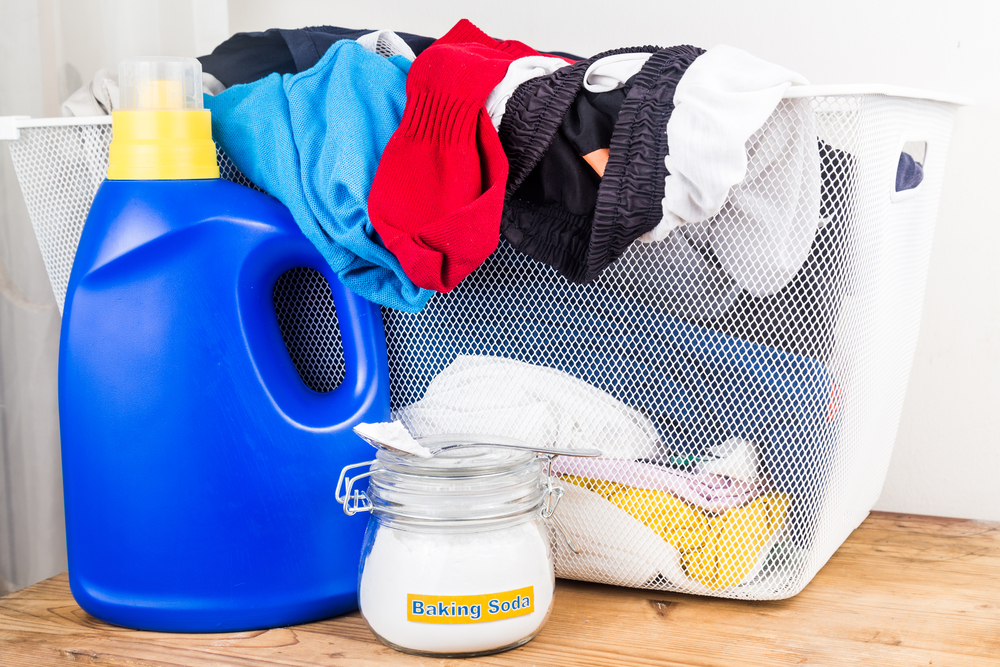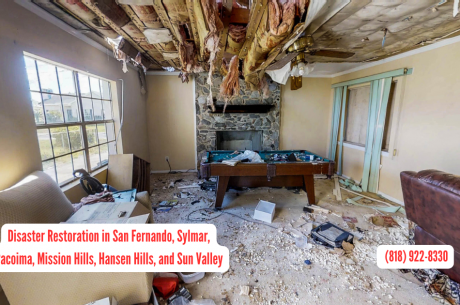Table of Contents
Dealing with the aftermath of a fire is daunting, and one of the most challenging aspects is removing soot. This substance not only leaves unsightly stains but can also pose serious health risks to humans and animals. At PuroClean of San Fernando, we provide you with the information you need to understand the dangers of soot exposure and how to address it effectively. For professional assistance, contact us at (818) 922-8330.
What is Soot?
Soot is a fine, black powder composed of tiny carbon particles that result from the incomplete combustion of hydrocarbons and fossil fuels. When wood, oil, coal, and other substances burn, they release carbon particles into the air. These particles can combine with acids, chemicals, metals, soils, and dust, forming soot.
The presence of soot is not just a visual nuisance; it also brings with it a foul smell and numerous contaminants. The tiny particles in soot can easily embed themselves in porous materials, making it challenging to clean. Understanding what soot is and where it comes from is the first step in addressing its presence in your home or office.
What is Soot from Fire?
Fires are the most common source of soot in homes and buildings. During a fire, incomplete combustion occurs when carbon particles do not fully burn due to low temperatures or insufficient oxygen. As a result, these particles are released into the air and eventually settle on surfaces throughout the property.
Soot can easily spread throughout your home or office during and after a fire. Because of its fine consistency, it can infiltrate every room, attaching to walls, ceilings, furniture, and other surfaces. If not removed promptly, soot’s acidic properties can cause further property damage, discoloration, and degradation of materials. Additionally, the fine particles can negatively impact indoor air quality, posing health risks to occupants.

Where is Soot Found Outside of a Fire?
Soot is not exclusively a byproduct of fires. It can be found in various places around your home or office, even if no fire has occurred:
- Stovetops: Cooking with oil can produce soot. As oil heats and breaks down, it releases tiny particles that can accumulate on stovetops and nearby surfaces.
- Fireplaces: Burning wood in a fireplace produces soot. Even if the fireplace hasn’t been used recently, residual soot can remain, especially if the fireplace was not cleaned after previous use.
- Walls: Oil-based paints can attract soot due to their chemical composition, causing discoloration on walls and ceilings.
- Candles: Burning candles, particularly those made from paraffin wax, can produce soot. A black ring around the candle’s edge indicates the presence of soot.
- Light Switches and Outlets: Electrical areas can attract soot particles due to static electricity.
- Furnaces: Furnaces can also produce soot contamination, especially during a puff back—a misfiring that sends soot throughout the home.
What Are the Dangers of Soot Exposure?
Exposure to soot should be taken seriously due to the potential health risks it poses. Soot particles are extremely small, allowing them to be easily inhaled, ingested, or absorbed through the skin and eyes. The harmful effects of soot exposure can manifest in various ways, including:
- Respiratory Issues: Soot particles can irritate the respiratory tract, leading to symptoms such as coughing, asthma attacks, sore throats, and difficulty breathing.
- Eye Irritation: Contact with soot can cause redness, itching, and irritation of the eyes.
- Headaches and Nosebleeds: The toxic compounds found in soot can contribute to headaches and frequent nosebleeds.
- Long-Term Health Effects: Soot is a known carcinogen, meaning prolonged exposure can increase the risk of cancer. For individuals with compromised immune systems or pre-existing respiratory conditions, such as asthma or emphysema, inhaling soot particles can exacerbate these conditions and lead to further complications.
Given the health risks associated with soot exposure, it is crucial to remove soot from your property as soon as possible to protect the well-being of all occupants, such as gloves, eyewear, and masks. Ensure that the area you are cleaning is well-ventilated by opening windows and doors. Professional specialized techniques, like air scrubbing and thermal fogging, may also be needed to restore indoor air quality following a fire.

Fire Restoration Contractor in San Fernando
Need a fire restoration contractor in San Fernando? PuroClean of San Fernando provides expert fire damage restoration, including smoke and soot removal. Contact us at (818) 922-8330 for 24/7 emergency service.
What Should I Keep in Mind When Removing Soot?
If you are dealing with soot in your home or office, it is essential to manage the cleanup process carefully to avoid further contamination and exposure. Here are some important considerations:
- Personal Protective Equipment (PPE): Always wear appropriate PPE, such as gloves, eyewear, and masks, when cleaning soot to protect yourself from inhalation and skin contact.
- Ventilation: Ensure that the area being cleaned is well-ventilated by opening windows and doors. This helps reduce the concentration of airborne soot particles.
- Professional Techniques: Professional cleaning techniques may be necessary depending on the severity of the soot contamination. Methods like air scrubbing and thermal fogging can help restore indoor air quality and eliminate lingering Odors.
How Do I Remove Soot?
To effectively remove soot from your property, it is important to identify the source and use the appropriate cleaning methods:
- Identify the Source: Determine where the soot is coming from to prevent further accumulation and address the root cause.
- Clean Non-Porous Surfaces: For surfaces like metal or glass, a damp cloth can often remove soot. However, avoid using water-based cleaners on soot-covered surfaces, as water can spread the soot and worsen the problem.
- Clean Porous Surfaces: Porous materials, such as wood and fabric, require specialized cleaners designed for soot removal. Dry-cleaning solvents or oil-based cleaners are effective options. Additionally, a vacuum equipped with a high-efficiency particulate air (HEPA) filter can be used to remove soot from carpets, upholstery, and other soft surfaces.
- Prevent Recurrence: Regularly clean areas prone to soot buildup, such as stovetops and fireplaces. Avoid using oil-based paints in your home or office, as they attract soot more readily.
- Professional Help: For extensive soot damage or if you are not comfortable handling the cleanup yourself, it is advisable to hire a professional fire damage restoration company. These experts have the experience and equipment needed to safely and thoroughly remove soot from your property.
For Professional Fire Remediation Services, Contact PuroClean of San Fernando
If your property has been affected by soot or fire damage, PuroClean of San Fernando is here to help. As “The Paramedics of Property Damage®,” we provide immediate and professional fire damage restoration and smoke remediation services. Our team is available 24/7 to respond to your emergency needs. Contact us at (818) 922-8330 for fire damage restoration services. Let us help you restore your property to its pre-damage condition, ensuring a safe and healthy environment for you and your family.



